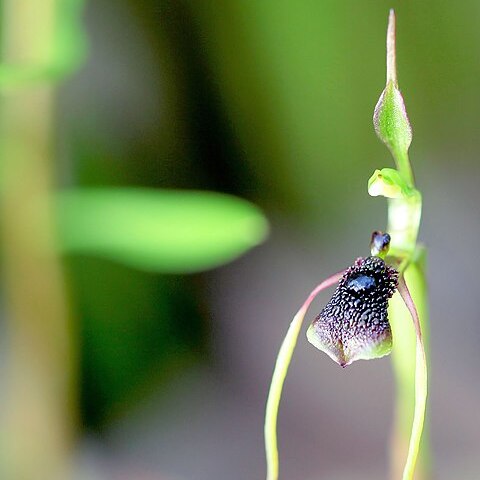Leaves 30–60 × 15–25 mm, margins entire or wavy. Flower stem 60–100 mm long. Flower erect, 12–16 × 6–8 mm, greenish or reddish with blackish labellum callus. Dorsal sepal 10–12.5 × 3 mm; apical club c. 0.4 mm long. Lateral sepals 9–10 × 0.7 mm, widely divergent; apical clubs c. 0.5 mm long. Petals reflexed back against ovary, 8–10 × 2.5–3 mm. Labellum obliquely erect, trapezium-shaped, 7–10 × 6–7.5 mm. Callus extensive, consisting of a few large glands and numerous smaller glands, covering much of labellum surface. Column 8–9 × 3–3.5 mm, wings very narrow.
An orchid.

